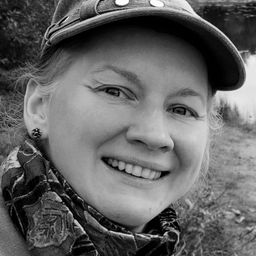The 1980s industrial identity and the lost memories of late-modernist architecture of Riga
My Session Status
What:
Paper
When:
9:30 AM, miércoles 31 ago 2022
(20 minutos)
Where:
UQAM, pavillon J.-A. De Sève (DS)
- DS-1420
| Riga has experienced three periods of industrial growth, all followed by a complete collapse. However, the identity of Riga as an industrial city has been created twice, and twice had it been destroyed. The first time was during the second half of the 19th century followed by the industrial collapse due to the 1stWorld War. The interwar period, despite impressive industrial achievements, was actually the first period of re-imagination of the identity associated with the city. During the third period of industrialization, the second industrial identity of Riga was constructed at the second half of the 20th century with different social, economic and cultural bricks compared to the first time. It ended with the economic collapse at the middle of the 1980s followed by political shift and renewal of the independent state of Latvia. The aim of this paper is to examine this last industrial identity by analysing structures and their architectural features in context with the present identity of the city and the possible impact of its industrial heritage on the image. The emphasis will be on the late-modernist architecture. At the 2nd part of the 20th century a large number of industrial plants and factories were located in and based upon older, historical enterprises in Riga. Contemporary architecture was used for in-fill or for new expansions near the existing factories (VEF, breweries), while new plants and factories were built on the outskirts of the city (Radiotehnika, RER), and often were commissioned by the military (Alfa, Straume, Komutators, Ēra). The architecture of the structures was diverse: from the simple, modest white-brick style of the post-war period to both a simplified and a very elaborated late-modernist style of the 60s and 70s; still, some brutalist architecture and several trends of post-modern and regional architecture popular among architects during the 1980s can also be found. A large part of those structures splendidly represent the general principles of Modern Movement: the large and/or ribbon-like windows, huge concrete walls and long-spanning beams, monotonous, evenly spaced windows for administrative buildings, simultaneously providing large spaces for machinery lines and flexible production uses. Some of those edifices played a role of ideological statements and visual landmarks of promise for a bright and happy future for the (Soviet) people, too. The contemporary image of those industrial sites is not as spectacular as the previous statement suggests due to both poor conditions of the badly built structures, and to their location inside closed and derelict territories. The never-ending concrete fences, closed gates, dull concrete walls, dusty windows, grey colour, greenery running wild in-between the structures, abandonment and lack of people inside those territories characterize perception of industrial sites by general public. The actual functions of those sites might be: the same use as original function, a new industrial or industry-related use, another, non industrial use of the same premises, another use for the territory while the original structures are mostly or completely lost or even replaced with new development. The visual identity of the industrial past is gradually disappearing. Today, the historians and heritage scholars are coming closer to recognize the architectural and historical significance and value of those industrial structures not only in urban space and history of architecture, but also in human memory, but this is contrasting with the neglect and negative attitude expressed by the general public. With the people related to the industrial past gone, the buildings could be the only possibility to challenge the public opinion and to help the society to face the diverse identity levels related to our common past. |
